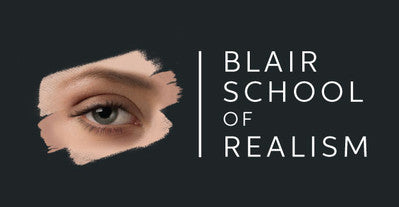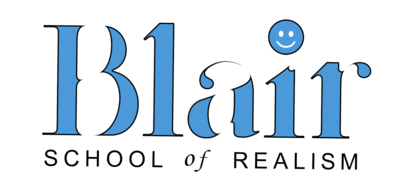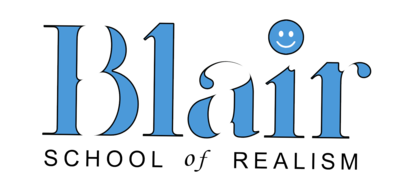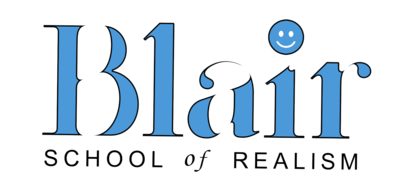Help choosing a workshop
Choosing the right Airbrushing workshop - We are here to help!
Often times students want to take a workshop but have a hard time choosing the one that is right for them. I am here to help you understand the differences in the types of classes we offer.
Every class encompasses the methods and processes Dru Blair uses in every painting he creates. Each class has it's own core focus. For some that may be color matching and blending for others technique or use of other tools might be the focus. We offer a variety of subjects and not every subject is equally suited for every technique. Of course classes are offered at different times which can be a factor for some people that may have a more ridged schedule.
Project or Sampler? - understanding the two types of classes we offer
Project classes:
"Project" classes are those where we work through different parts of the same image such as a single portrait. All your work is done on only one painting. This is the standard most people expect when taking a class. It is often better suited for those with a little experience, because as you move through the project you will gain a greater understanding and become more skilled. This will sometimes lead to distractions during class where a student wishes to readdress areas the class may have moved on from and prevent them from fully focusing on the task at hand. We try to provide free paint time in the evenings where students can go back and rework areas or practice skills learned in the lessons. However, even knowing this, previously painted areas can often haunt the artists and make it hard for them to move onto the next lesson. The main benefit this type of class offers is that you have either a finished piece of art or one you can finish after leaving class. The drawback is that you can become distracted with finishing and become reckless or so parallelized with fear, of messing up your painting, that you may not do your best work or take a risk to learn something new.
A few of our Project type classes include Portraits (male, female, children), Automotive such as the skull and fire class, Wildlife Tiger or Birds of Prey
Sampler classes:
In contrast our "Sampler" classes are those where you do not paint a complete project but rather it consists of many samples from different projects each done as its own small painting. Sometimes we paint images of things: a bird's claw, or an eye, while other times we may paint surfaces or textures like: skin, glass, or stone. "Sampler" classes may be less frustrating for those with short attention spans or if you are new to airbrushing, as every mini-project is a chance to start over with a clean slate and learn from your previous attempts both the successes and the areas you need to work on. This is opposite to the project class in terms of benefits the mini-projects tend to evoke less of an emotional attachment. Often times the student will elect to try a risky move that they might be afraid to attempt on a large project with many hours of investment. Of coarse the drawback is you don't really have a finish piece that you might want to display.
A few Sampler type classes includes Wild Kingdom, Textures, Portrait Sampler, or General Realism.
Workshops are designed to be different but equal
One type of class is not better than the other but you may find one to be a better fit for you and the way you like to work. I should add that the goal of any of our classes is to learn, practice, and gain understanding not to finish a painting or leave with a masterpiece. Even in project classes often we do not complete the project nor do we expect to.
Making color work for you!
The next thing you might want to consider is how in depth you wish to explore Color. Dru Blair's Color Buffer Method (aka Color Buffer Theory) is an in-depth study of the way color and specifically paint works in the real world.
Need for color accuracy is often subject driven:
Different classes and subjects require differing amounts of accuracy when it comes to color. Some subjects like Portraits demand a high accuracy and have a full day devoted to color matching and blending. Others really don't rely heavily on color so it may only be briefly discussed and only to the extent necessary to complete the project(s) at hand. Examples would be the Texture class; where the use of the tools plays a more important roll than color matching. Another would be the Automotive class; where colors tend to be more fanciful and less emphasis is placed on accuracy than on impact. Some other classes fall in between where there might be a more formal color lesson than you would have with the Textures class but not so in-depth as with the Portrait classes. Our Wildlife classes come to mind as being the middle ground for color accuracy.
For the Beginners
When choosing an airbrushing workshop, we recommend that beginners take our "Foundations Day," which is typically held the day before most 4-day workshops. We get everyone up to speed with the very basics of the airbrush and set you up for success in the other classes we offer.
Some workshops are better suited for beginners. For example, many of our Sampler workshops qualify as beginner workshops. See product descriptions for individual workshops.
Prerequisites
Most classes do not require any prerequisites, with the exception of those listed as "Advanced". The main reason for this designation is that in order to achieve success for these workshops, it is best to have basic working knowledge of the concepts, color matching, etc. that we teach in our other workshops.
"Advanced" classes also tend to move more quickly, and while the classes are still taught step-by-step, students are left for longer stretches of time to complete the assigned lessons. "Advanced" classes tend to be both longer in length and with more time devoted to practice than lectures, so students spend most of the class on their projects.
Guests Artists
We often invite guest artists who are masters in their fields to teach at the school. As each workshop can differ dramatically, in medium, subjects, length and materials. We are happy to answer any questions and give you additional details about the upcoming classes to help you decide what is right for you.
Materials and supplies
Classes by Dru Blair:
All materials and supplies are provided for in-class use at all of Dru Blair's airbrushing workshops.
Classes by Guest Artists:
Classes taught by guest artists may have special requirements. This often includes a supply list of items the students need to bring with them for that specific class. If in doubt or you have difficulty locating some of the items contact us or the artist directly for additional assistance.




